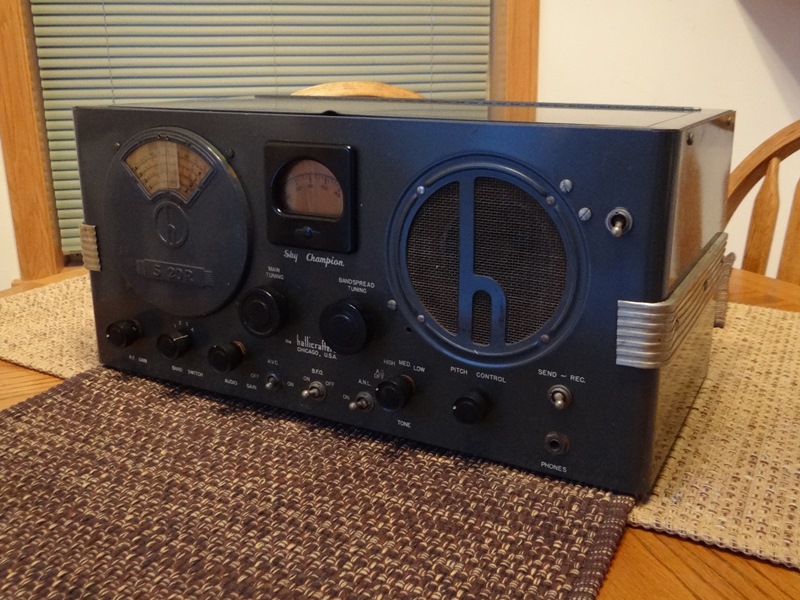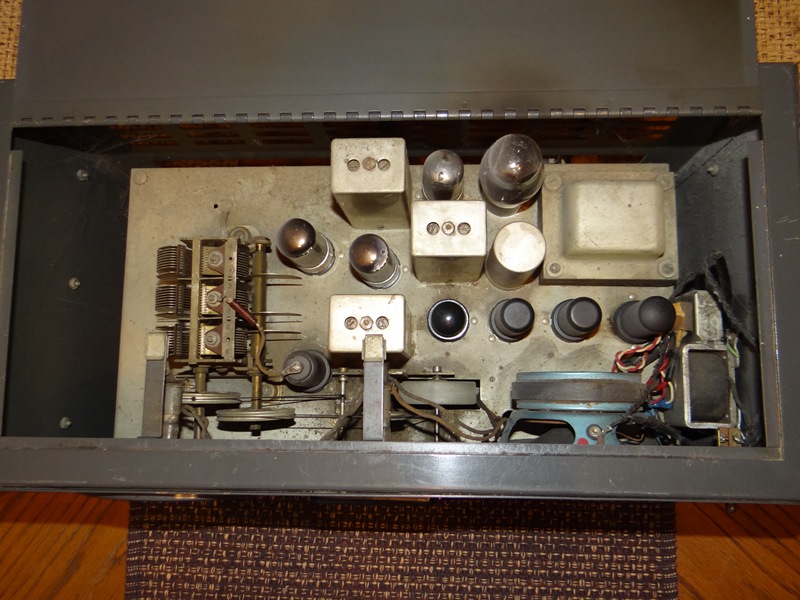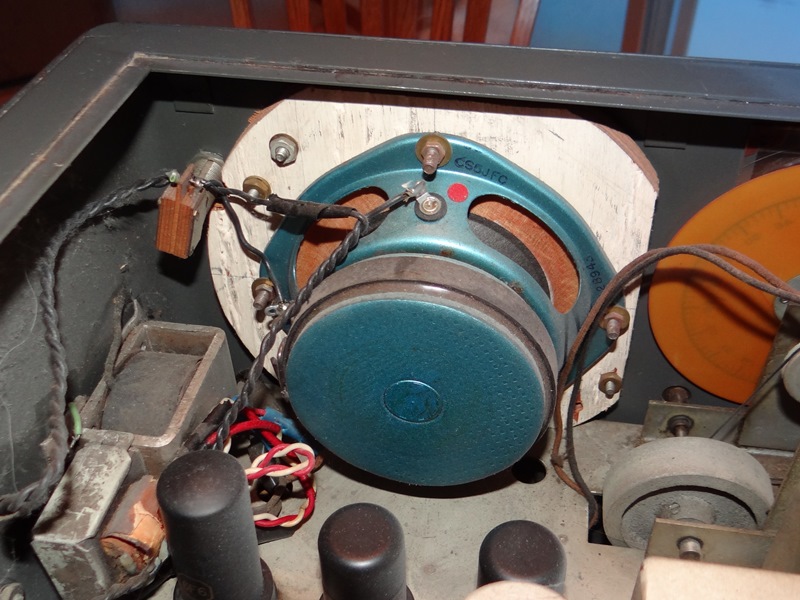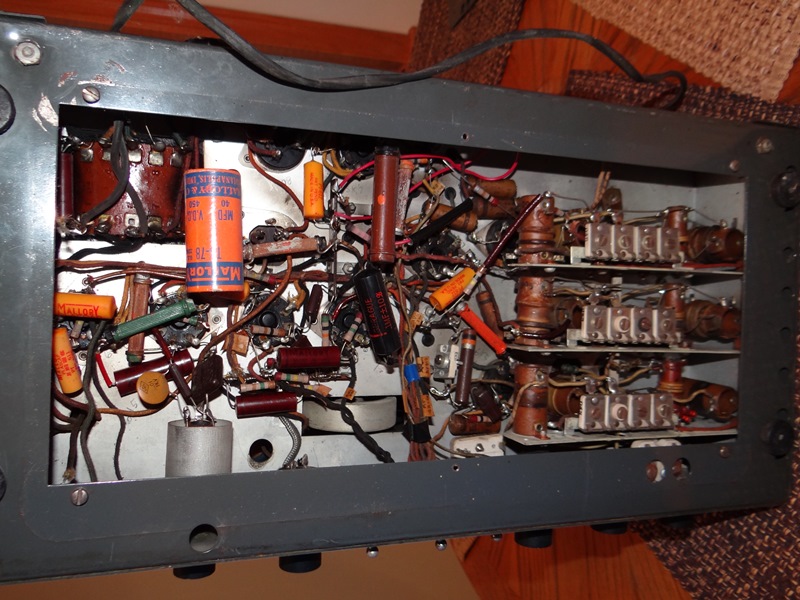Some of my fondest childhood memories are of the holiday gatherings at my Uncle Walt’s and Aunt Eleanor’s house on Nottingham Street in Detroit. The strong scents of roasting turkey and ham got stronger as I ran down the curved basement stairs to get my holiday hugs. My attention would quickly shift, however, to Uncle Walt’s Hallicrafters S-20R short-wave radio, standing just above my eye level. It certainly didn’t look like any transistor radio I was familiar with. This unit had
tubes, and took a minute to warm up before gradually revealing people speaking strange languages. To me, this radio was magical.
 Hallicrafters
Hallicrafters made radios in Chicago starting in 1932. Based on the serial number of Uncle Walt’s unit, this specific radio was likely built around August of 1940. It’s interesting to compare 73 year old electronics with the modern semiconductors in today’s devices. Fortunately, I have the necessary schematic diagrams and tuning manuals to guide me. It’s interesting to see the tubes inside the radio, and I’ll likely have to replace a few of those, but the real work will occur under the chassis, where most of the original electronics will need to be replaced.
Look at the World War II-era advertisement of the S-20R below – talk about scaring your customers! I think the advertisement says “Sure, your church and neighborhood will be bombed, but your Hallicrafters radio will survive.” This thing is heavy and built like a tank, so that might be true. I’m sure war time broadcasts were heard on this radio.

I’m still in the research phase, but here’s what I know so far:
1) The original battleship-gray enamel paint is in good condition and will be left as-is.
2) The power cord and speaker appear to have been replaced at some point, I will acquire the proper size and type of speaker and cloth-covered power cord to make it period-correct.
3) Some tubes will need replacement, but interestingly are still available.
4) All capacitors will be replaced. These semiconductors were built around a paste-like material that dries over time.
I will provide updates here as progress is made. This should be an interesting restoration project.
A view of the interior from the top:
 This speaker mounted to a hunk of plywood appears to be non-original and will be replaced:
This speaker mounted to a hunk of plywood appears to be non-original and will be replaced:
 Below the chassis, most capacitors will be replaced
Below the chassis, most capacitors will be replaced
